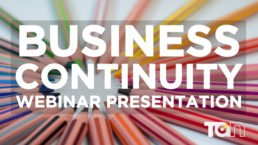The Number Crunch
The Number Crunch
E M A I L C O P Y
Hi %FIRSTNAME%,
To help build a financial snapshot of where your business is positioned, we will need some numbers. Below we have listed out what’s needed as well as notes on where to find them in your business...
1. Total Annual Sales
Found from your Profit & Loss Account. If your financials are not current, use the latest 3 or 6 months and then annualise.
2. Total Annual Purchases
Obvious for some businesses, not for others. If you have Trade Creditors, then enter your Purchases here. For businesses using outside contractors use "Contractors" for this (added to Trade Creditors). If you are a one-person army or 100% personal services with no purchases, then treat the work you do IN your business as a contractor. in this case multiply your number of hours per week by the hourly rate you'd need to pay someone to do your work, then annualise. Use this for your Total Annual Purchases. If you have a Services business (with no inventory) and most of your Sales are generated from advertising, then use marketing budget here. If you're a Broker, use your commission rate payable here.
3. Net Profit before Tax (incl Owner's salary)
Must include all "Owner Benefit" of drawings, wages or cash etc. Add this to the Trading Surplus (or Loss) in the P&L. Make sure you don't count twice if you (as owner) are on the payroll. Also make sure the Trading Surplus in the P&L is calculated to exclude depreciation.
4. Total Annual Wages
Make sure you don't include your owner's salary/wages here. Should only be for those on the payroll. If "solo" business that only has the owner then this value will be "0".
5. Number of Full Time Equivalent (FTE) Staff
This should exclude the owner and include part-timers e.g. 0.5 for someone working half the week.
6. Total Arrears
Any tax arrears, rent arrears or wages arrears that you may be behind on or paying off
7. Annualising Repayments
Add up the total repayments for any assets and debts that you pay off over a 12 month period. What is the total of your Repayments.
8. Annualising Provisional Tax
Add up the total for Provisional Tax that you would expect to pay over a 12 month period including any Terminal Tax. What is the total Tax obligation?
9. Number of Transactions
How many transactions do you have per MONTH. Find this number from the difference between invoice numbers from one month to the next. Use an average month over a longer period if seasonal business.
Please have these completed and email them to me directly prior to our next session.
%LD_NAME%
Your Local Director
The Local Business Network
P.S. Your financial data will be kept strictly confidential
The Prep Pack
Prep Pack
W O R K S H E E T
E M A I L C O P Y
Hi Name,
This week we are getting more detail from you around the aspirations you have not only for your business, but for those aspects that have an effect on your business.
We use a workbook to give us background to see the support you have around you that make up how you operate your business.
Ordinarily we do this prior to starting with every client, but there may be some “triage” that we’ve needed to do ahead of getting this background information from you.
Consider this workbook as a briefing paper to help us get to know you as well as what you would want us to know about you as a trusted advisor.
Please contact us if you have any questions on the above before our next session.
S E N D W O R K S H E E T T O C L I E N T
The Size of the Prize
Size of the Prize
E M A I L C O P Y
Hi %FIRSTNAME%,
In our upcoming session together will look at how your business should perform when it’s “optimised”. The numbers we need from your business will help us estimate the difference an “optimised” business would make to your financial performance. We call this “The Size of the Prize”.
The 5 numbers we need are:
1. Total Annual Sales
Found from your Profit & Loss Account. If your financials are not current, use the latest 3 or 6 months and then annualise.
2. Total Annual Purchases
Obvious for some businesses, not for others. If you have Trade Creditors, then enter your Purchases here. For businesses using outside contractors use “Contractors” for this (added to Trade Creditors). If you are a one-person army or 100% personal services with no purchases, then treat the work you do IN your business as a contractor. in this case multiply your number of hours per week by the hourly rate you’d need to pay someone to do your work, then annualise. Use this for your Total Annual Purchases. If you have a Services business (with no inventory) and most of your Sales are generated from advertising, then use marketing budget here. If you’re a Broker, use your commission rate payable here.
3. Net Profit before Tax (including Owner’s salary)
Must include all “Owner Benefit” of drawings, wages or cash etc. Add this to the Trading Surplus (or Loss) in the P&L. Make sure you don’t count twice if you (as owner) are on the payroll. Also make sure the Trading Surplus in the P&L is calculated to exclude depreciation.
4. Total Annual Wages
Make sure you don’t include your owner’s salary/wages here. Should only be for those on the payroll. If “solo” business that only has the owner then this value will be “0”.
5. Number of Full Time Equivalent (FTE) Staff
This should exclude the owner and include part-timers e.g. 0.5 for someone working half the week.
Please contact us if you have any questions on the above before our next session.
Regards,
%LD_NAME%
Your Local Director
The Local Business Network
P.S. All financial data will be kept strictly confidential.
The 5 numbers we need are:
Found from your Profit & Loss Account. If your financials are not current, use the latest 3 or 6 months and then annualise.
Obvious for some businesses, not for others. If you have Trade Creditors, then enter your Purchases here. For businesses using outside contractors use “Contractors” for this (added to Trade Creditors). If you are a one-person army or 100% personal services with no purchases, then treat the work you do IN your business as a contractor. in this case multiply your number of hours per week by the hourly rate you’d need to pay someone to do your work, then annualise. Use this for your Total Annual Purchases. If you have a Services business (with no inventory) and most of your Sales are generated from advertising, then use marketing budget here. If you’re a Broker, use your commission rate payable here.
Must include all “Owner Benefit” of drawings, wages or cash etc. Add this to the Trading Surplus (or Loss) in the P&L. Make sure you don’t count twice if you (as owner) are on the payroll. Also make sure the Trading Surplus in the P&L is calculated to exclude depreciation.
Make sure you don’t include your owner’s salary/wages here. Should only be for those on the payroll. If “solo” business that only has the owner then this value will be “0”.
This should exclude the owner and include part-timers e.g. 0.5 for someone working half the week.
Your Local Director
The Local Business Network




